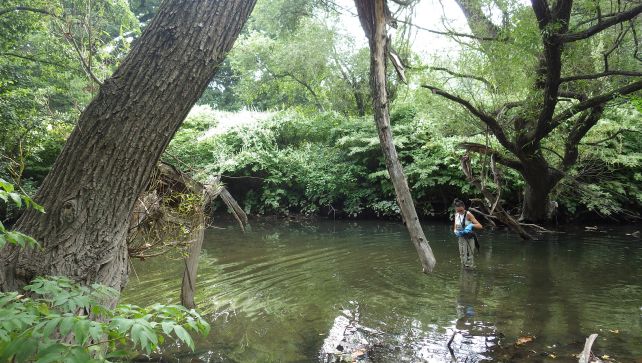Although there have been a range of locations and sampling periods within the three year study, there was a consistent collection of samples amongst the last two weeks of July and the first two weeks of August within each years’ sampling period. These four weeks have become our standard in sampling periods as it pairs with the heaviest use of the river by our on water recreation program. Numbers of sites were also condensed as the project progressed to areas along the river of great concern. The four sites chosen as sentinel enterococci sites consisted of two locations within Muskrat Cove, the 182nd Street fish passage and dam, and CSO pipe HP-009.
One of the greatest introductions of bacteria into the waterway come from combined sewage overflows (CSO’s) throughout lower stretches of the river. Bacterial influx from this pipe during wet weather events can cause a disturbance throughout the ecosystem leading to imbalances such as toxic algal blooms. Students part of partner organization,
Rocking the Boat, led our estuarine portion of our project, collecting samples at the HP-009 outflow during dry weather sampling dates. In looking at data collected by the students, there are no dry weather sampling dates that exceed the EPA bacterial threshold for recreational (secondary contact) waters of 501 MPN/100 mL. (To view all of the data analyzed, see chart below.)Another area of concern along the river comes from a pipe located within Muskrat Cove which has been witnessed to flow consistently into the river. High levels of bacterial presence had been noticed within the 2014 and 2015 seasons, exceeding the highest levels that may be detected through our Enterolert testing method of 2416.9 MPN/100 mL. In 2016, none of the four sampling events resulted in higher than the EPA threshold. Although no conclusions have been made to this change, Alliance staff look to follow up on possible reasonings to these results. Before the end of the 2016 recreation season, Alliance Ecology staff will conduct additional enterococci study within the upper reaches of the watershed. To learn more and get involved, email us at
Kathalene.Lamboy@parks.nyc.gov.






